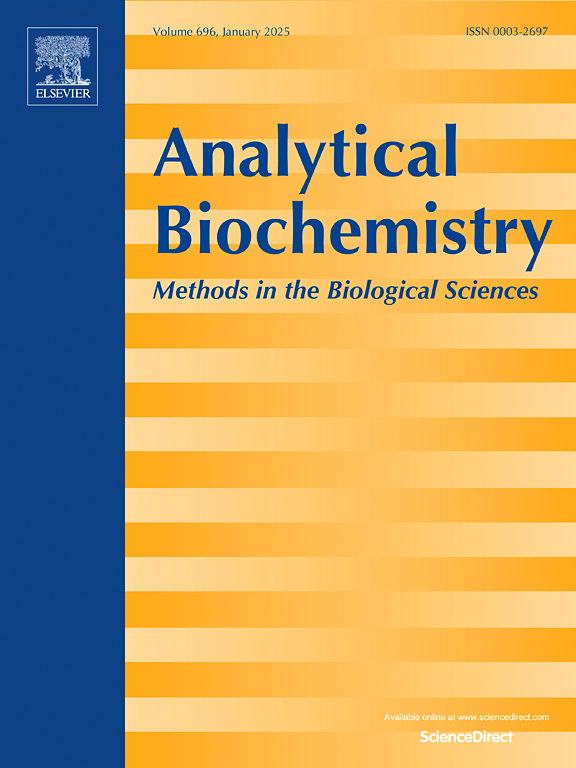In-vivo implementation of the HPTLC methodology to rat plasma for the concurrent determination of a novel combination therapy for the management of COVID-19 (favipiravir and nitazoxanide)
IF 2.6
4区 生物学
Q2 BIOCHEMICAL RESEARCH METHODS
引用次数: 0
Abstract
The 2019 coronavirus outbreak has prompted scientists to investigate pharmaceuticals to prevent the spread of the disease. Favipiravir (FAV) has received Food and Drug Administration FDA approval for the treatment of various viral infections with notable efficacy in clinical trials for COVID-19. Nitazoxanide (NTZ) is a broad-spectrum antiparasitic and antiviral agent used for the treatment of parasitic illnesses. Recently, the antiviral medications FAV and NTZ have been utilized therapeutically as early antiviral combination therapy for COVID-19, highlighting their safety, efficacy, and immunomodulatory effects. Despite several clinical studies on both FAV and NTZ, no analytical method has been developed for their concurrent detection. The objective of this study is to develop a TLC-densitometric method for their assessment and application to rat plasma. FAV, NTZ, and tizoxanide (the active metabolite of nitazoxanide (TZM)) were simultaneously determined using an HPTLC method embracing sulfasalazine as an internal standard (IS). Silica gel 60 F254 used as the stationary phase for chromatographic separation, the mobile phase consisted of chloroform-methanol-formic acid (9.5:0.5:0.2, v/v/v), with UV detection at 230 nm demonstrating linearity within the range of 0.5–5 μg/band. The proposed methodology has been shown to effectively measure the analyzed elements in both pure form and in-vivo rat plasma.

在体内实施大鼠血浆HPTLC方法,以同时确定一种用于治疗COVID-19的新型联合疗法(favipiravir和nitazoxanide)。
2019年冠状病毒的爆发促使科学家们研究药物来防止疾病的传播。Favipiravir (FAV)已获得美国食品和药物管理局(FDA)批准,用于治疗各种病毒感染,在COVID-19的临床试验中疗效显著。Nitazoxanide (NTZ)是一种广谱抗寄生虫和抗病毒药物,用于治疗寄生虫病。最近,抗病毒药物FAV和NTZ作为COVID-19的早期抗病毒联合治疗被用于治疗,突出了它们的安全性、有效性和免疫调节作用。尽管有几项关于FAV和NTZ的临床研究,但没有一种分析方法可以同时检测它们。本研究的目的是建立一种薄层色谱密度测定方法,以评估其在大鼠血浆中的应用。采用以柳氮磺胺为内标(IS)的高效液相色谱法同时测定FAV、NTZ和替唑昔尼特(硝唑昔尼特的活性代谢物TZM)。以硅胶60f254为固定相进行色谱分离,流动相为氯仿-甲醇-甲酸(9.5:0.5:0.2,v/v/v),在230 nm处紫外检测,在0.5 ~ 5 μg/波段范围内呈线性关系。所提出的方法已被证明可以有效地测量纯形式和体内大鼠血浆中的分析元素。
本文章由计算机程序翻译,如有差异,请以英文原文为准。
求助全文
约1分钟内获得全文
求助全文
来源期刊

Analytical biochemistry
生物-分析化学
CiteScore
5.70
自引率
0.00%
发文量
283
审稿时长
44 days
期刊介绍:
The journal''s title Analytical Biochemistry: Methods in the Biological Sciences declares its broad scope: methods for the basic biological sciences that include biochemistry, molecular genetics, cell biology, proteomics, immunology, bioinformatics and wherever the frontiers of research take the field.
The emphasis is on methods from the strictly analytical to the more preparative that would include novel approaches to protein purification as well as improvements in cell and organ culture. The actual techniques are equally inclusive ranging from aptamers to zymology.
The journal has been particularly active in:
-Analytical techniques for biological molecules-
Aptamer selection and utilization-
Biosensors-
Chromatography-
Cloning, sequencing and mutagenesis-
Electrochemical methods-
Electrophoresis-
Enzyme characterization methods-
Immunological approaches-
Mass spectrometry of proteins and nucleic acids-
Metabolomics-
Nano level techniques-
Optical spectroscopy in all its forms.
The journal is reluctant to include most drug and strictly clinical studies as there are more suitable publication platforms for these types of papers.
 求助内容:
求助内容: 应助结果提醒方式:
应助结果提醒方式:


